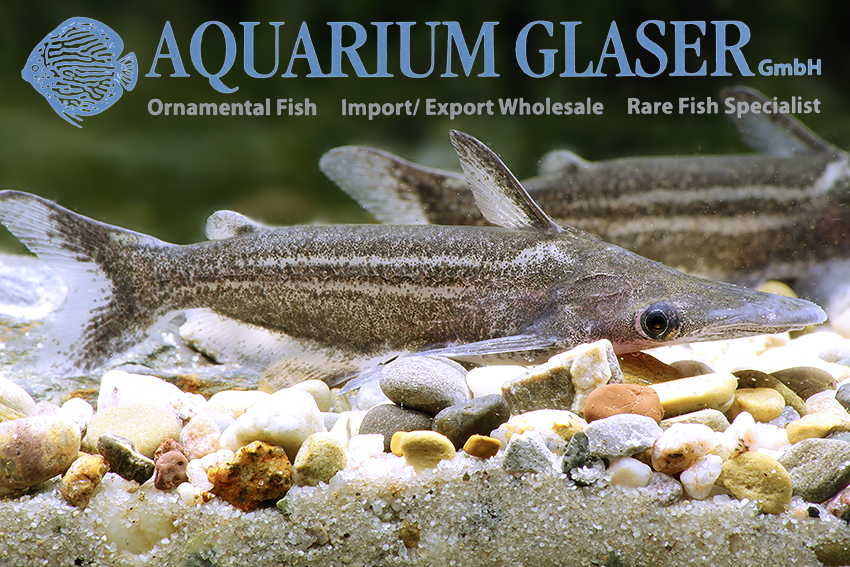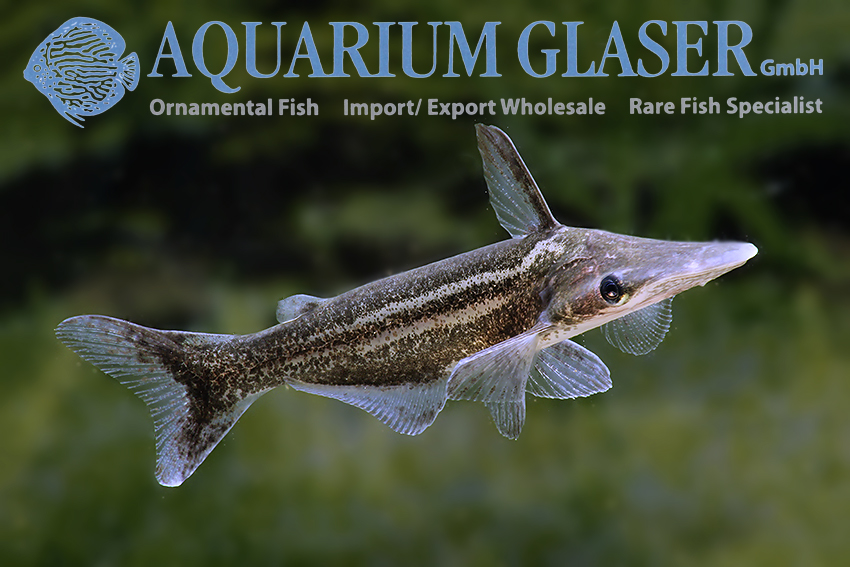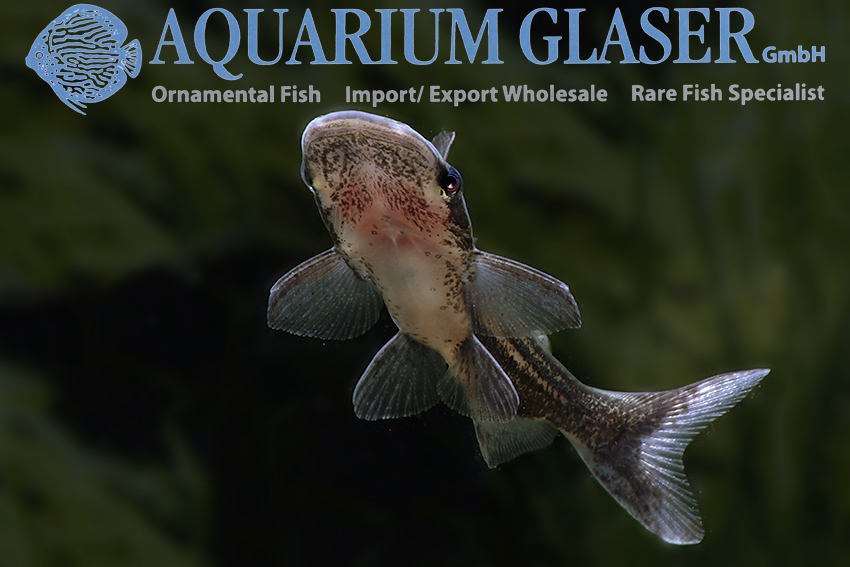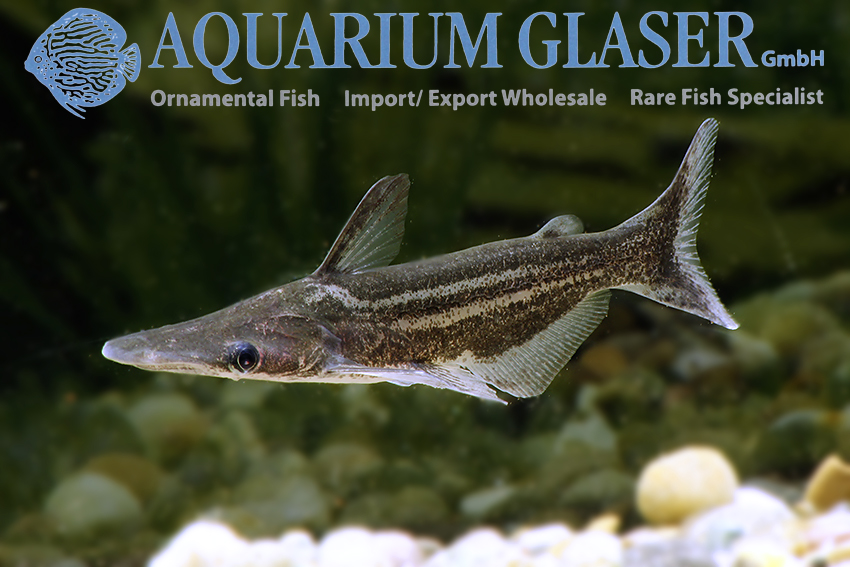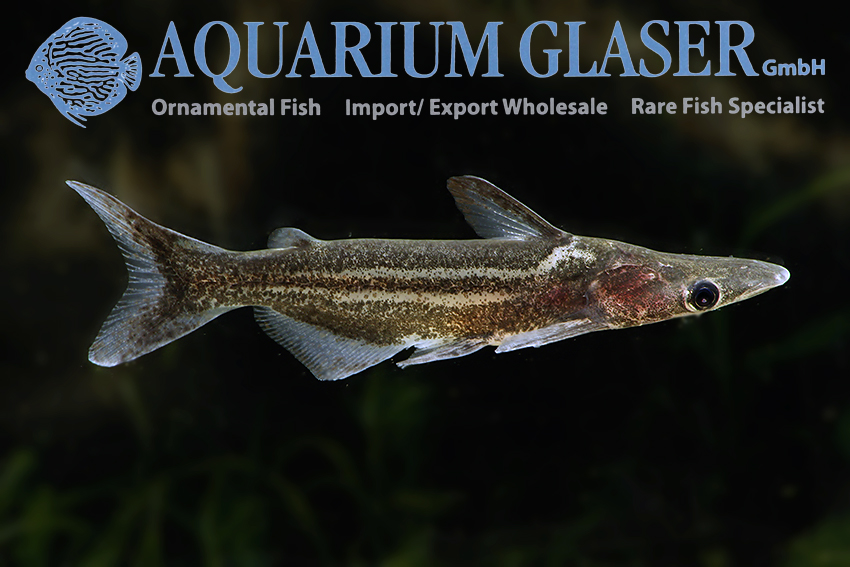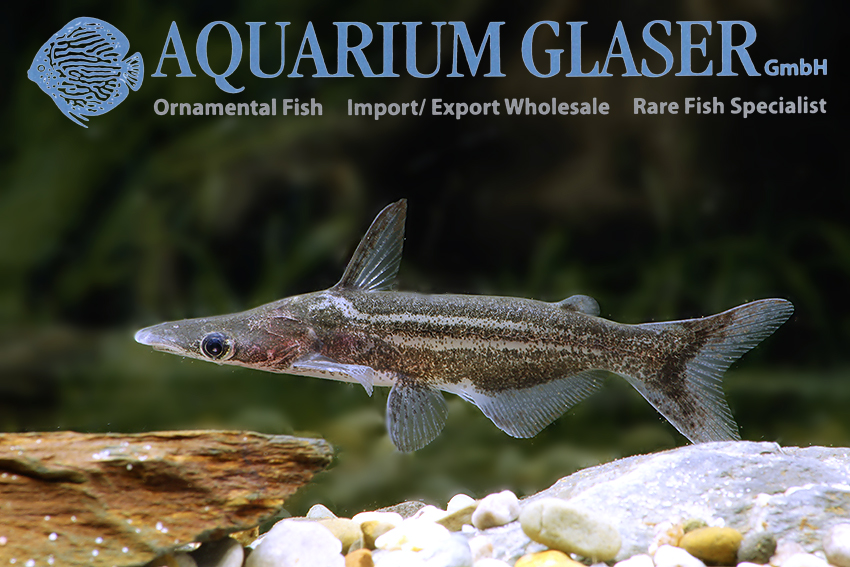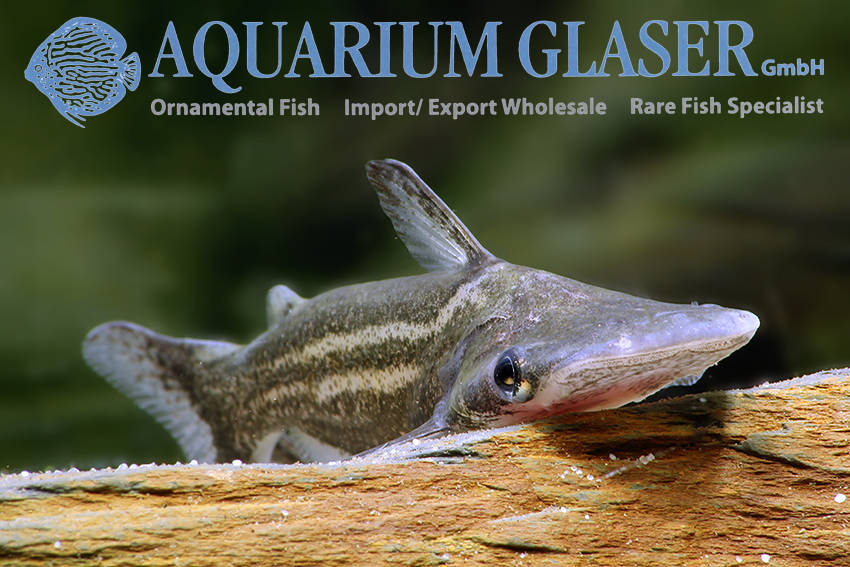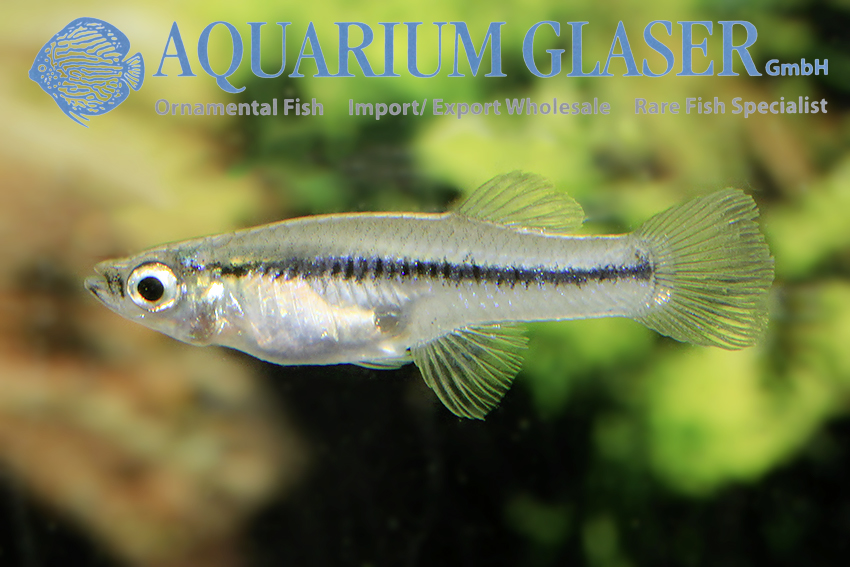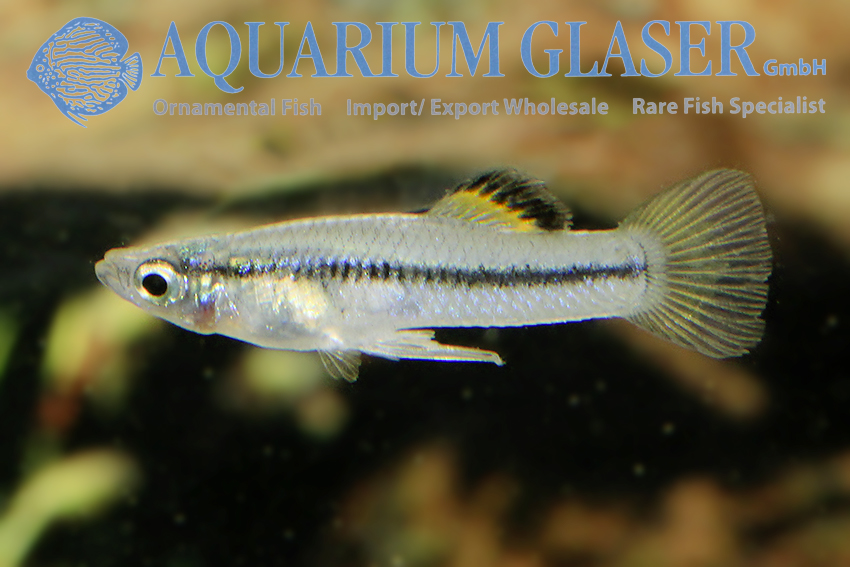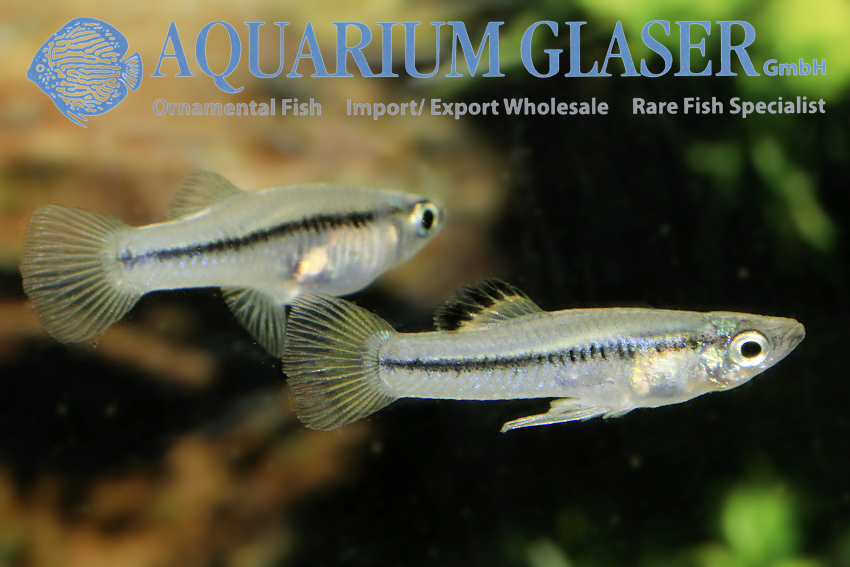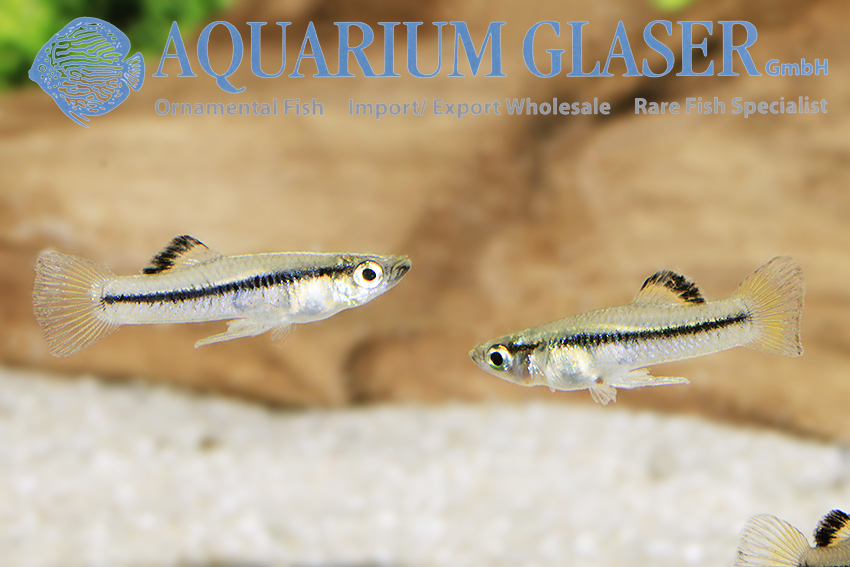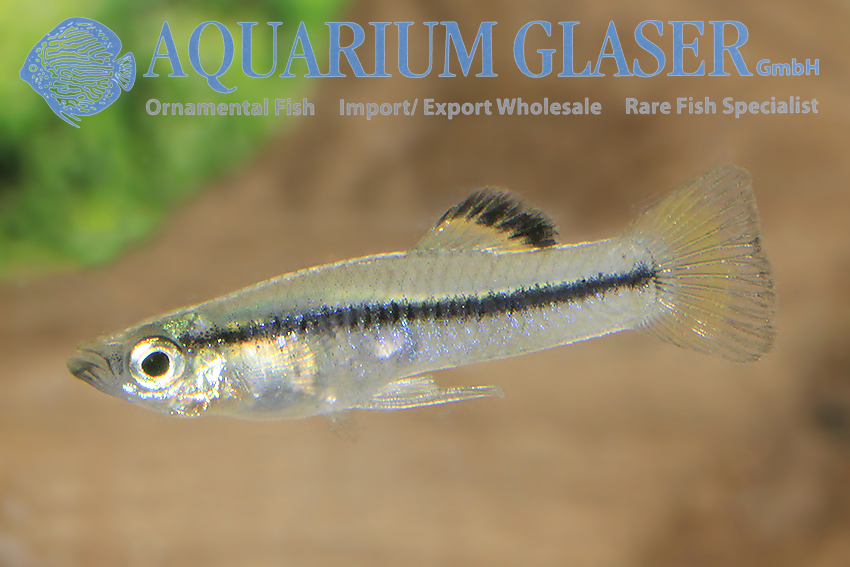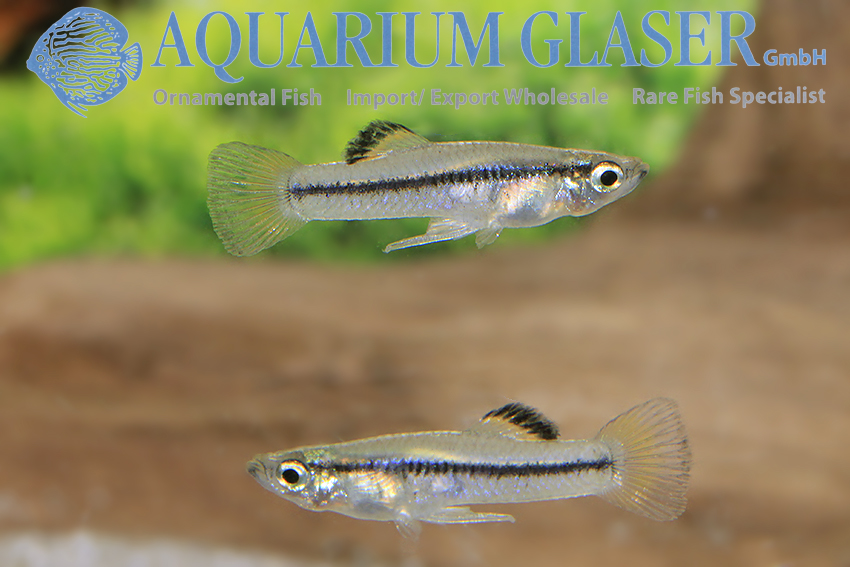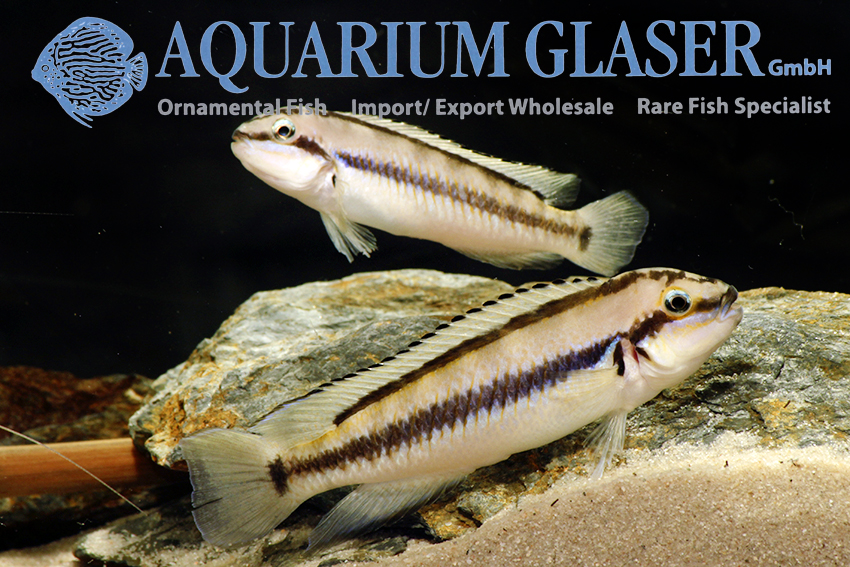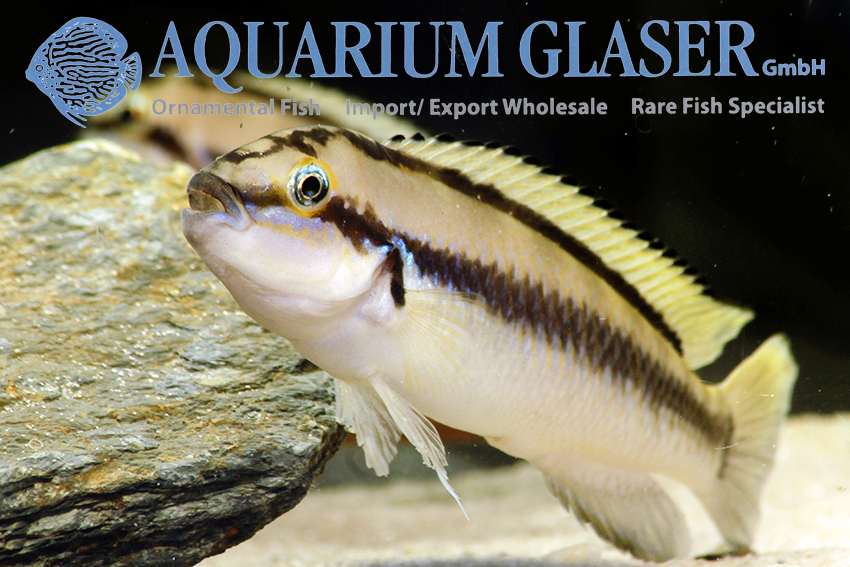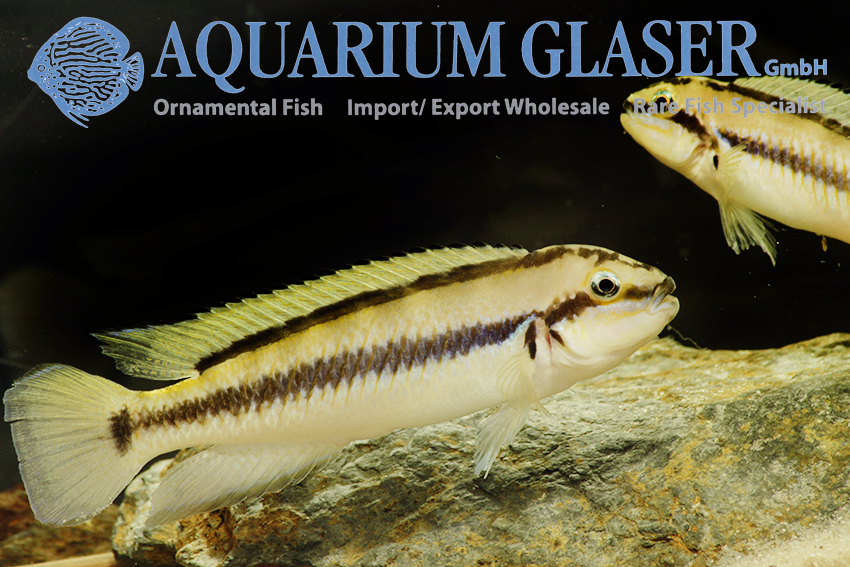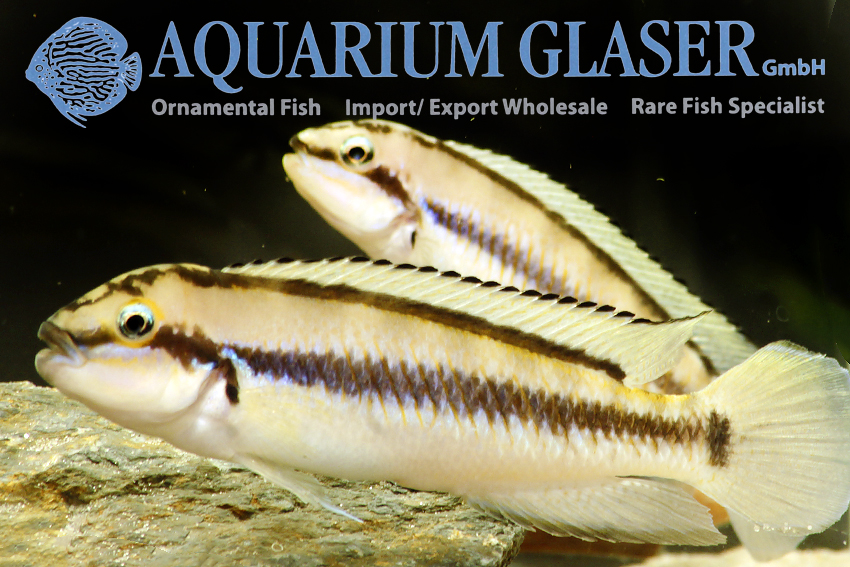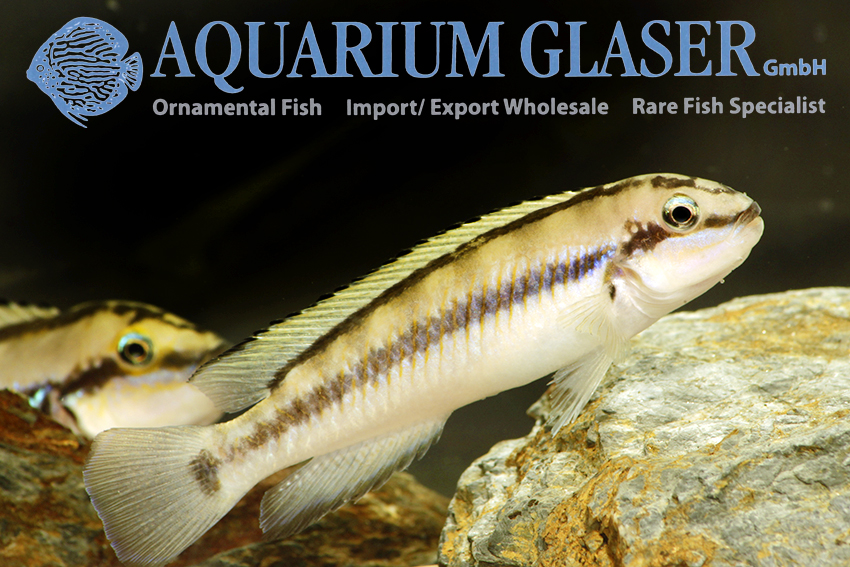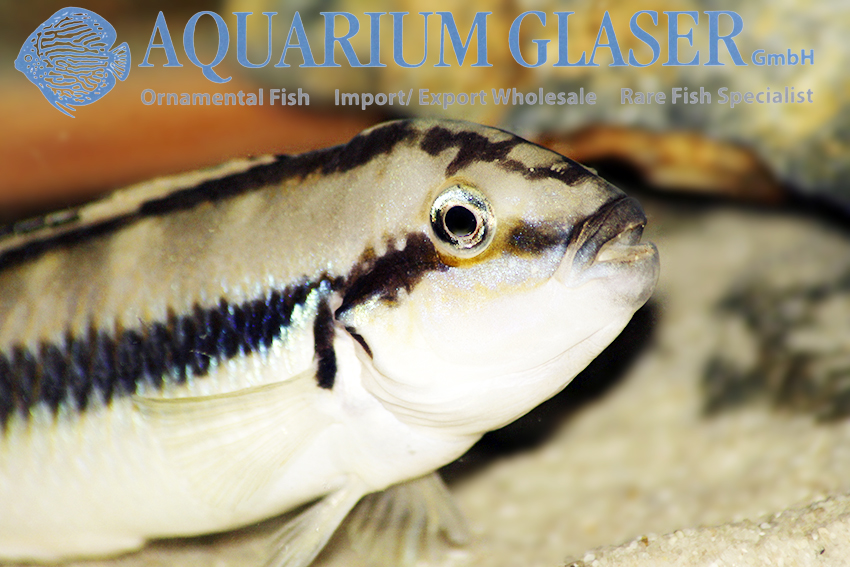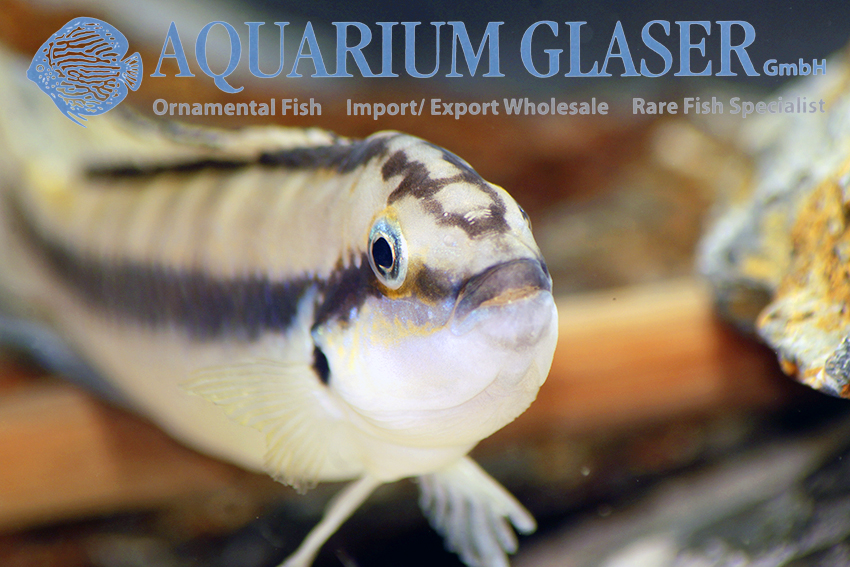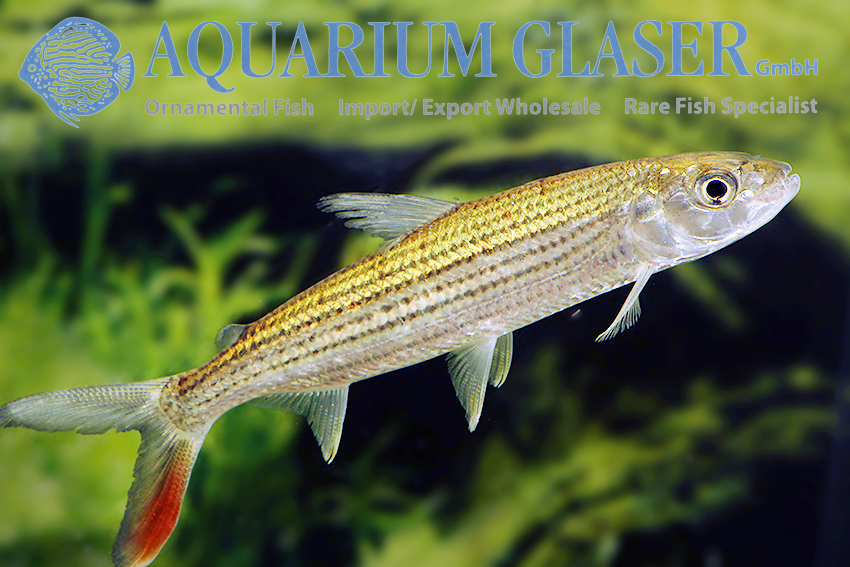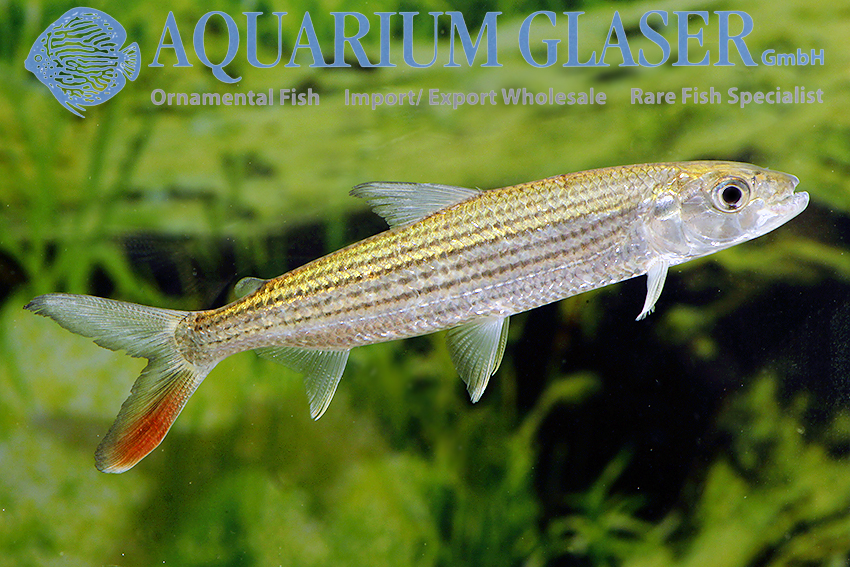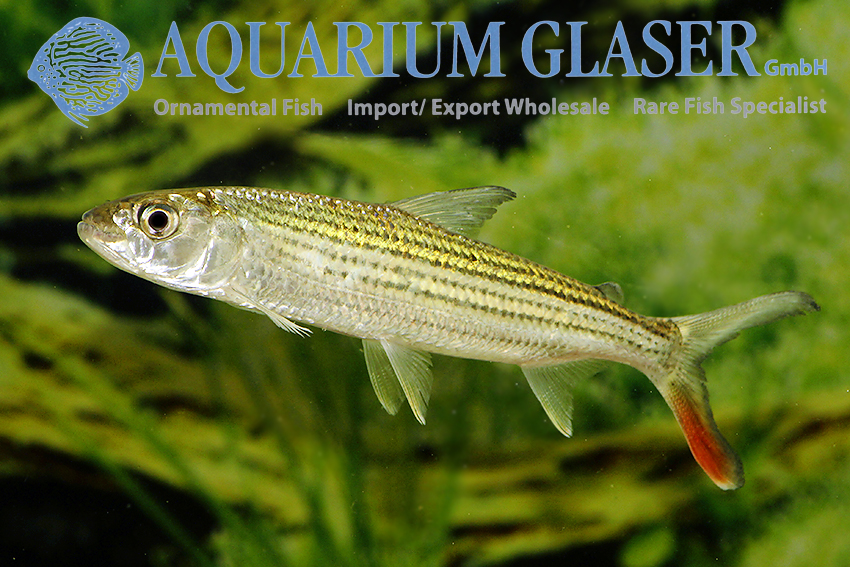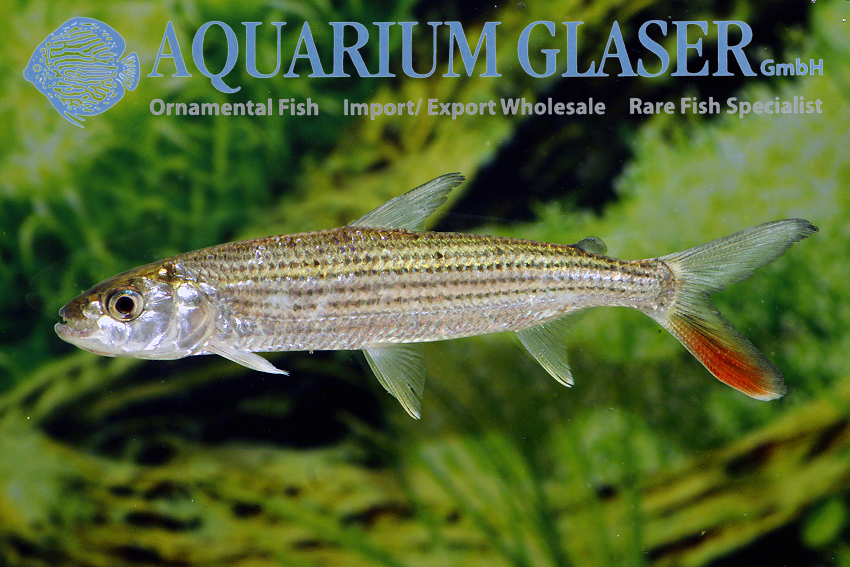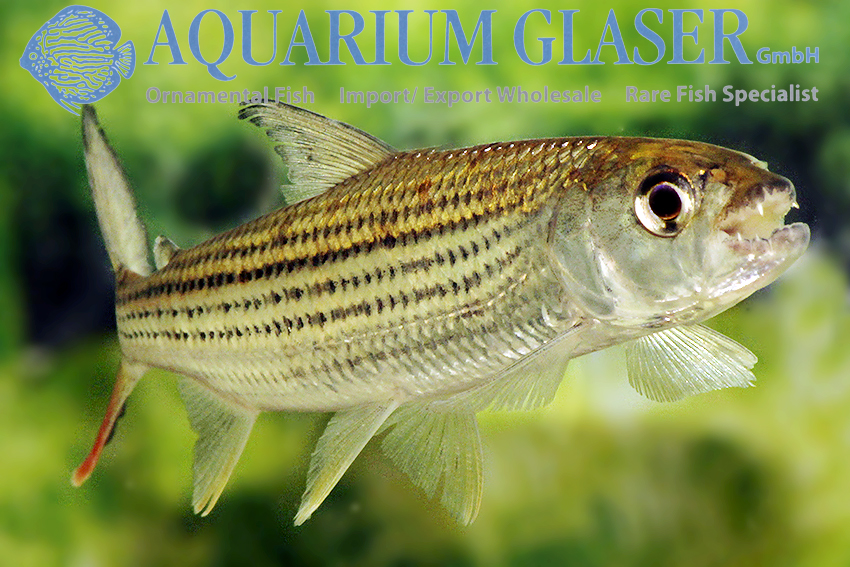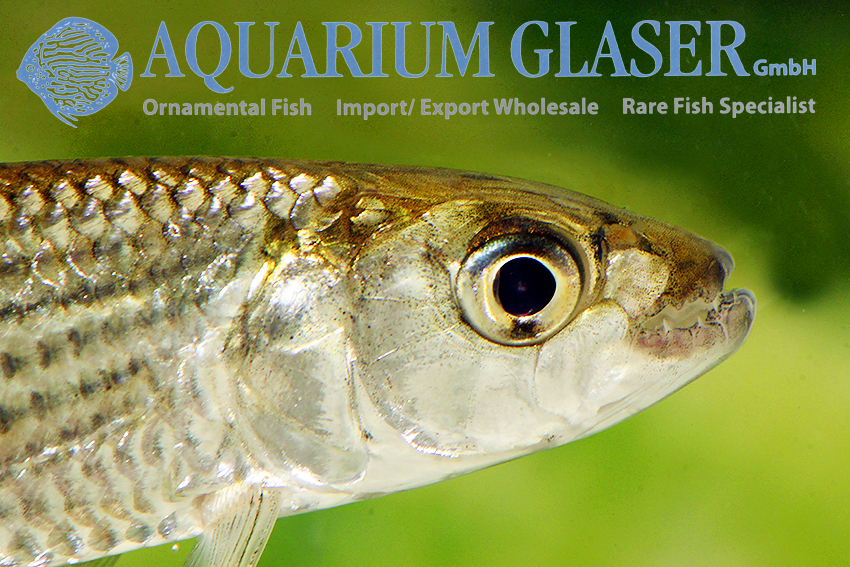Update: es handelt sich um die Art Ageneiosus lineatus Ribeiro, Rapp Py-Daniel & Walsh 2017
The dolphin catfish were only recently revised and divided into two genera: Ageneiosus and Tympanopleura. Tympanopleura are the smaller species. They are characterized by a circular structure immediately behind the edge of the gill cover, which looks like a tympanum.
Unfortunately, the pretty dolphin catfish imported from Peru from time to time, which is called “Green Stripe”, is not included in the revision and apparently belongs to a scientifically undescribed species. We would classify it also rather in Tympanopleura than in Ageneiosus, especially since it reaches with – as far as known – only 15-20 cm length (usually over 40 cm with Ageneiosus). Among catfish friends this species is also known as sp. III. It has been (and still is) confused with Ageinosus vittatus, but this is a large species with a much rounder head profile and a different pattern.
For our customers: the animals have code 203264 on our stocklist. Please note that we only supply wholesalers.
Text & photos: Frank Schäfer





